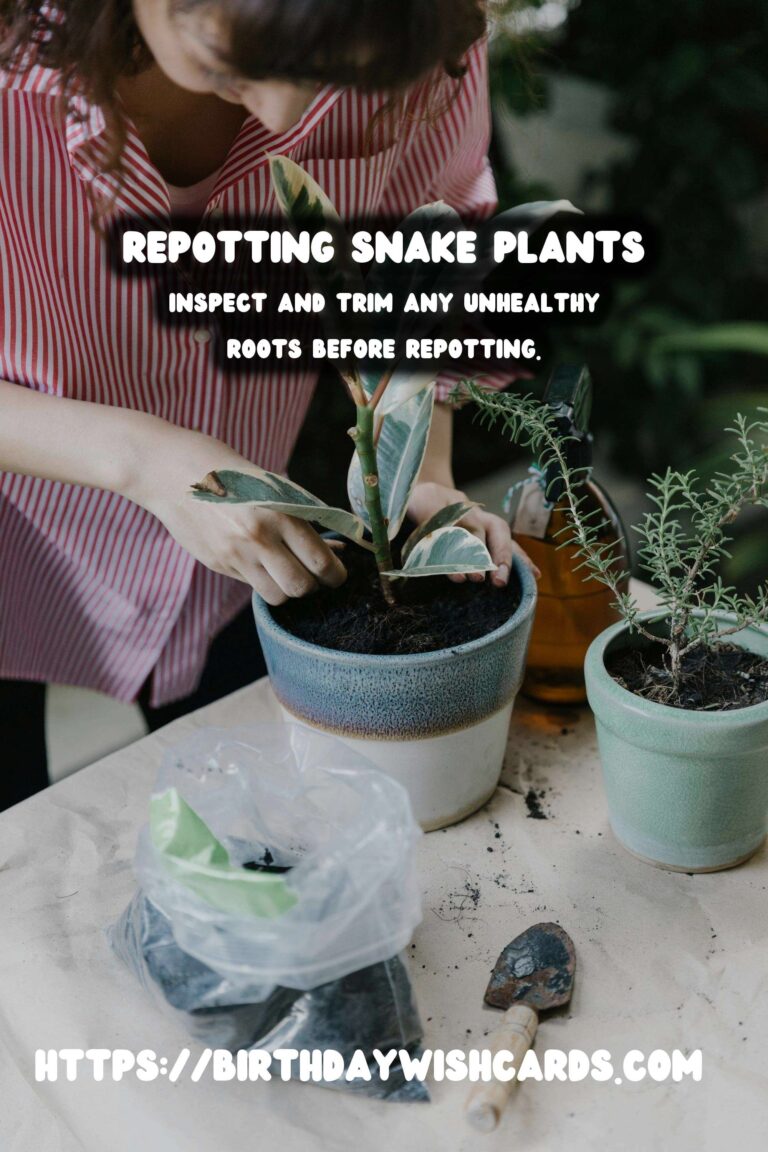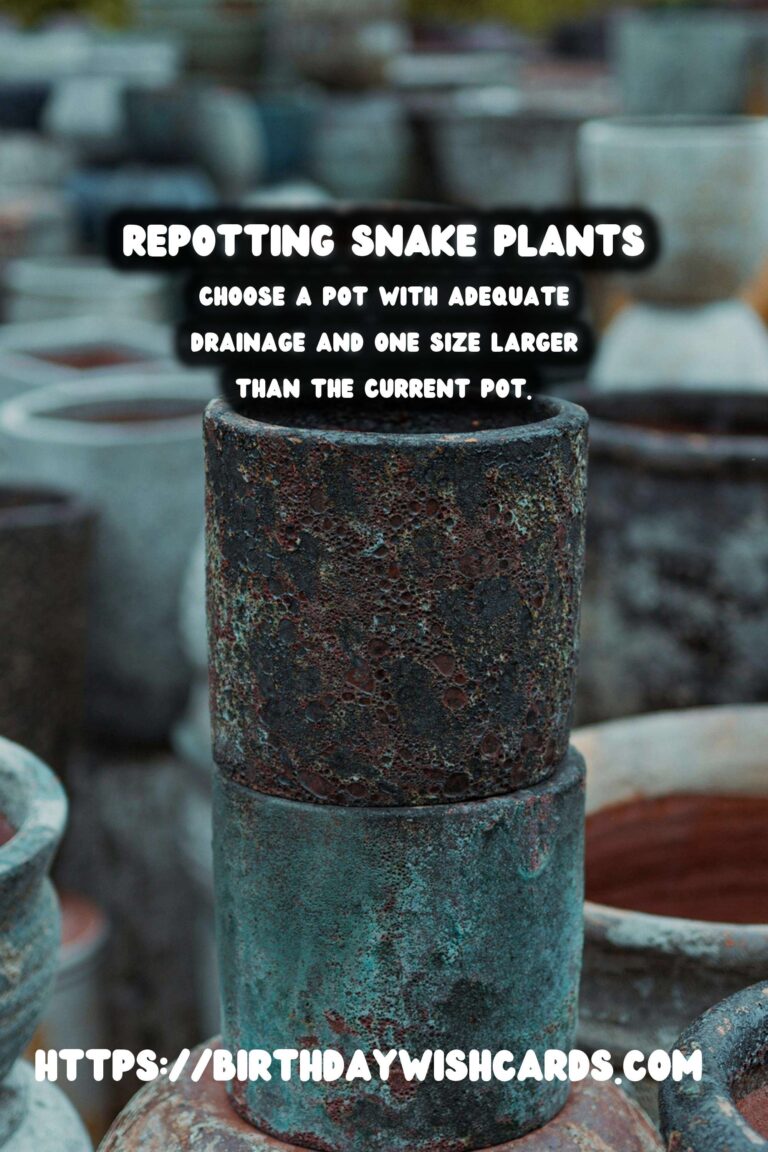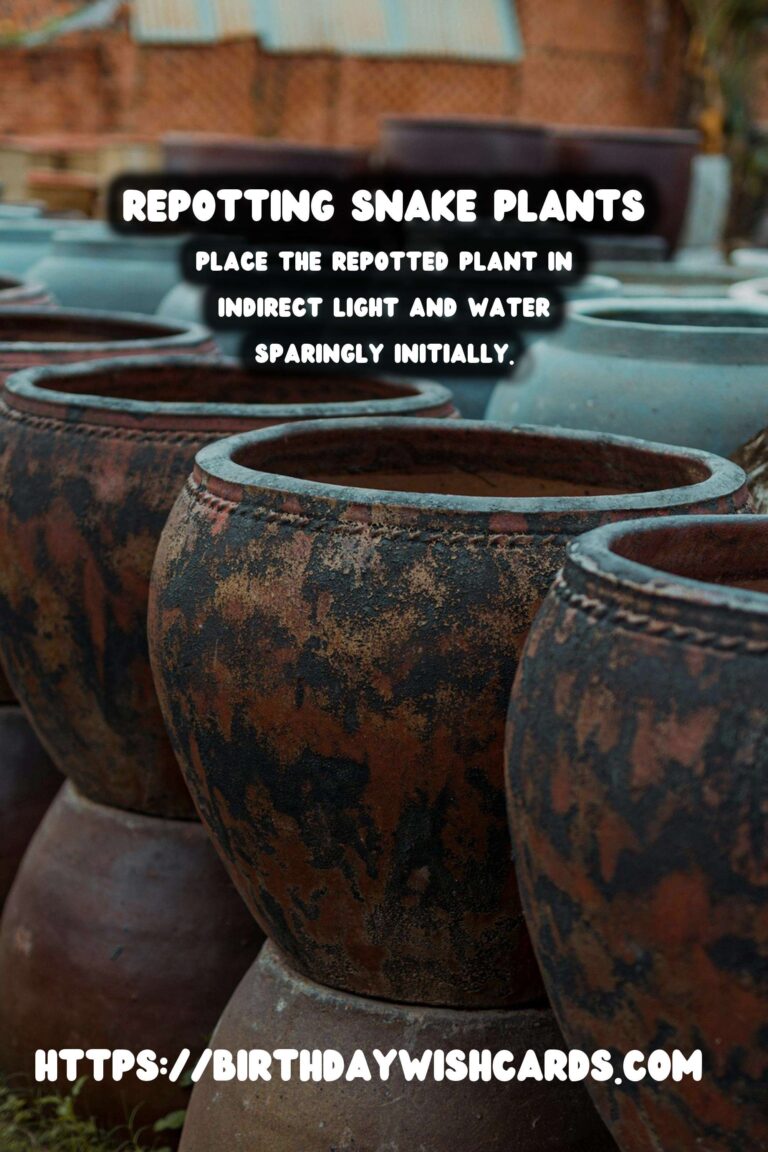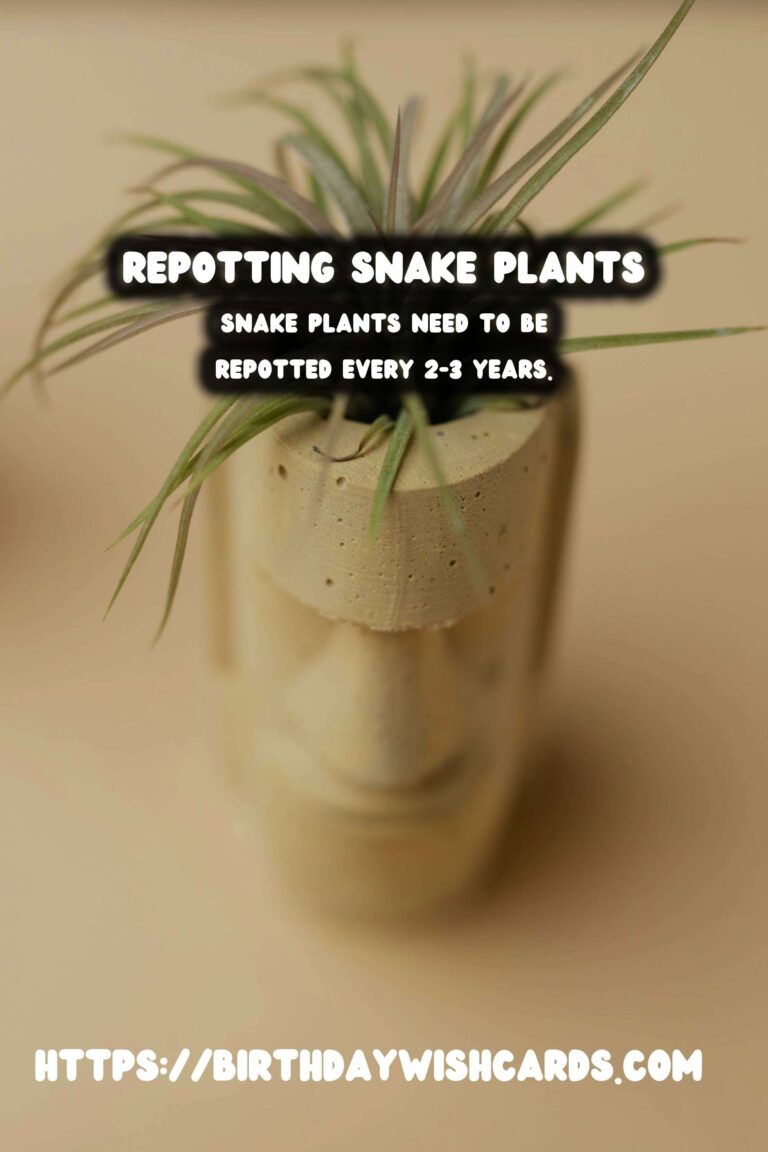
Snake plants, also known as Sansevieria or mother-in-law’s tongue, are popular houseplants due to their hardiness and striking appearance. However, like all plants, they require proper care to thrive. One of the essential aspects of caring for your snake plant is knowing when and how to repot it. In this article, we’ll explore the best practices for repotting snake plants to ensure they continue to grow healthy and strong.
When to Repot Your Snake Plant
Understanding when to repot your snake plant is crucial for its health. Typically, snake plants need to be repotted every 2-3 years. Look for signs like roots growing out of the drainage holes, soil drying out quickly, or a significant slowdown in growth. These are indicators that your snake plant has outgrown its pot and needs more space to expand.
Choosing the Right Pot
When selecting a new pot for your snake plant, consider the size, material, and drainage. The new pot should be one size larger than the current one to allow room for growth. Ensure it has adequate drainage holes to prevent waterlogging, which can lead to root rot. Materials like terracotta are excellent choices as they are porous and allow the soil to breathe.
Preparing the Soil
Snake plants prefer well-draining soil. A cactus or succulent mix is ideal as it provides the necessary drainage and aeration. You can also create a custom mix by combining potting soil with sand or perlite to enhance drainage. Avoid using heavy garden soil, which can retain too much moisture and harm the plant.
Steps for Repotting a Snake Plant
Follow these steps to repot your snake plant successfully:
- Remove the Plant: Gently remove the snake plant from its current pot. You may need to loosen the soil around the edges and carefully pull the plant out, ensuring you don’t damage the roots.
- Inspect the Roots: Check the roots for any signs of rot or damage. Trim away any unhealthy roots with clean scissors.
- Prepare the New Pot: Add a layer of your soil mix to the bottom of the new pot.
- Position the Plant: Place the snake plant in the new pot, ensuring it sits at the same depth as before. Fill around the plant with more soil mix, pressing it gently to remove air pockets.
- Water Thoroughly: Give the plant a thorough watering, allowing excess water to drain out of the bottom.
Post-Repotting Care
After repotting, place your snake plant in a location with indirect light to allow it to adjust. Water it sparingly for the first couple of weeks to prevent stress and give it time to settle into its new environment. Over time, resume your regular care routine, ensuring it receives adequate light and water.
Conclusion
Repotting your snake plant is a vital part of its care regimen. By recognizing when it needs repotting and following the correct steps, you can ensure your snake plant remains healthy and continues to be a beautiful addition to your home. Remember, a well-cared-for snake plant can thrive and grow for many years, adding greenery and life to your space.
Snake plants need to be repotted every 2-3 years. Choose a pot with adequate drainage and one size larger than the current pot. Use a well-draining soil mix, such as a cactus or succulent mix. Inspect and trim any unhealthy roots before repotting. Place the repotted plant in indirect light and water sparingly initially. 









#SnakePlants #PlantCare #RepottingTips #Houseplants




